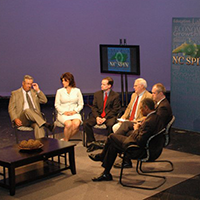Is higher education facing a re-set?
Published August 31, 2023
I spent all of my professional career – totaling 43 years – in higher education. When I joined the faculty of N.C. State University in 1978, colleges and universities were expanding. Enrollment was rising, programs were growing, and faculty positions were being added. One of the biggest challenges for academic departments was deciding what types of specializations to recruit for the new hires.
The recent news about West Virginia University (WVU) couldn’t present more of a contrast. WVU, the largest university in West Virginia, announced enrollment declines are forcing a 16% cut in faculty and elimination of 32 programs. These changes to a well- respected institution in operation since 1867 sent shock waves throughout higher education nationwide. While most higher education institutions are not now sharing WVU’s plight, there are worries they may in the near futu
A look at enrollment trends at four-year colleges and universities in the nation are cause for worry about following WVU’s path. From 1970 to 2010, which some call the “golden age” of higher education, higher education enrollment jumped 100%. But enrollment growth from 2010 to 2030 is expected to be only 9%. And after 2030, projections show nationwide college enrollment falling, just as has happened in West Virginia. This trend has been dubbed the “enrollment cliff.”
There are other issues facing higher education. A big one is cost. Annual tuition and fees for the school year 2022-23 at public four-year institutions are over two times higher than thirty years earlier in 1992-23. And this is after adjusting for general inflation, meaning the dollars have the same purchasing power in both time periods. For private four-year institutions, the increase was slightly lower, at 1.8 times higher than in 1992-93.
A second issue is the financial return from a higher education degree. Traditionally, jobs requiring a college degree paid much more than other jobs, thereby making the expense of a college education worthwhile. A recent study from the Federal Reserve Bank of St. Louis confirms this is still the case. If paying for a college education is of thought in terms of an investment, the study shows the annual interest rate earned is in double-digits.
Yet there are important exceptions to this generalization. The national dropout rate for enrolled college students is 40%. Research shows college dropouts actually earn less than high school graduates. Also, almost 60% of college students take more than four years to graduate, thereby increasing their total costs and reducing the net benefits from the degree. Lastly, the investment returns from a college degree vary significantly by the student’s degree major.
There are significant regional differences in these issues facing higher education. While several analyses predict college enrollment will begin to dip in North Carolina before the end of the current decade, the drop will be less than in many other states.
College costs also vary among states. Student expenses at public universities in North Carolina are more affordable than elseswhere. North Carolina public universities have the 8th lowest tuition and fees among all states. The UNC System also has better results for student completion than comparable institutions.
Nevertheless, the conclusion is that higher education – including in North Carolina - will face important challenges in the future, challenges that may significantly change how they operate.
Consider enrollment. If colleges and universities find their traditional base of 18-24 year-olds shrinking or even just slowing in growth, they could increase their focus on older age groups. In fact, with the labor market and occupations expected to radically change in the future as technology continues to develop and expand, there will likely be a need to retrain and reskill a significant percentage of existing workers. Colleges and universities could develop programs to address this need. We could see the college and university of the future teaching a very different age demographic.
To control costs, higher education institutions will be under increased pressure to evaluate programs and services on a cost/benefit basis, and make some very hard decisions about generating savings. Based on my experience as a faculty member over seven different decades, I know most faculty strongly believe their work is essential. I don’t envy those administrators and leaders who may have to make decisions like those at West Virginia University.
While academics are usually rated on their teaching and publishing, counseling of students is often under-appreciated. It shouldn’t be. Academic advising is the link between the student’s academic work and their future occupation. The role of the academic adviser is to align the student’s interests with the reality of the kinds of occupations they can pursue. Improved and expanded academic advising can both reduce the time needed for students to graduate as well as be a guide for students to jobs they understand and expect
In short, higher education may be facing a re-set. While I won’t be there to participate, I, like you, will decide if it’s successful.
Walden is a William Neal Reynolds Distinguished Professor Emeritus at North Carolina State University.







